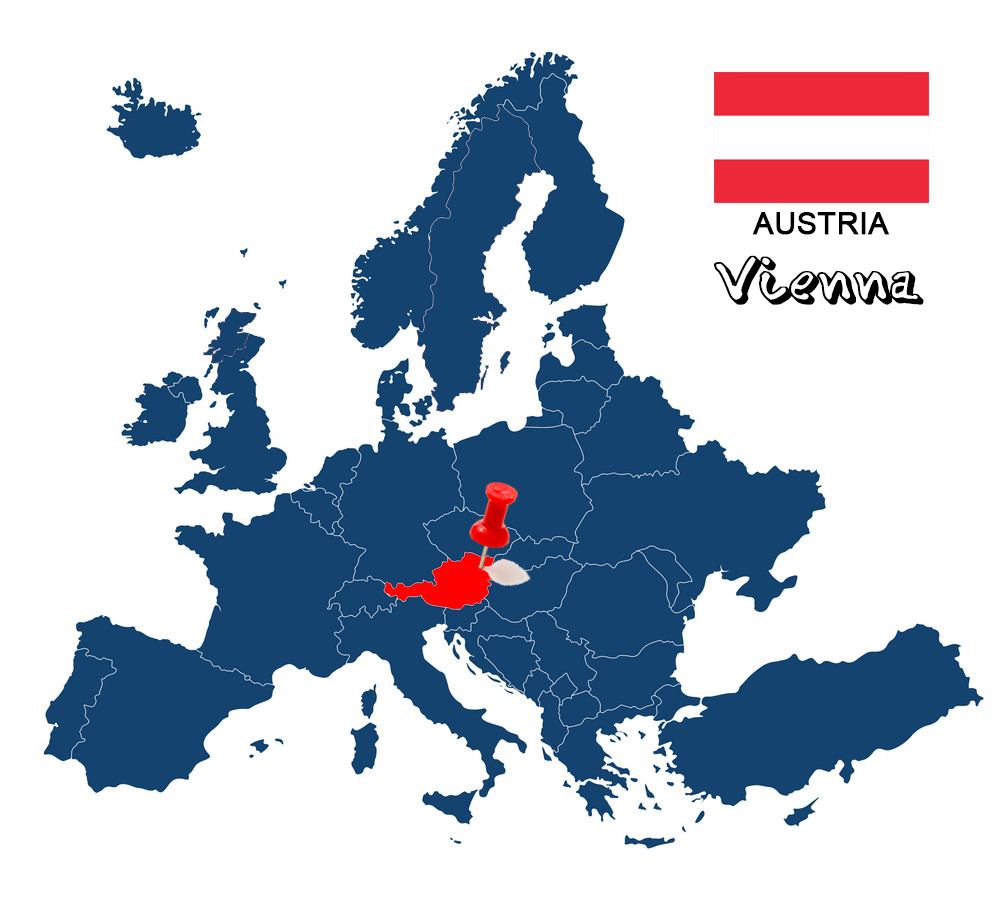
Vienna was the only place all my familiar people had visited, except me. At every family table, at every friendly meeting, I heard so many descriptions and so many stories, that at some point, I was convinced that I had been there too. After many exhortations, therefore, I decided to visit it, and as soon as I set foot in the Austrian capital, I instantly realized that everything I had heard was true and even more lovely than I had conceived it in my mind.
A few words about the city
Vienna is the capital of Austria and one of its federal states, while at the same time it is a political, cultural and economic center of the country. Its population reaches about 2,000,000 inhabitants, making it the largest city in the country. It is a city that relies heavily on tourism, as Vienna with its great wealth of artworks, monuments and museums attracts many tourists. It is no coincidence that it is in the top Christmas destinations worldwide, since the decoration and the outdoor Christmas markets, as well as the weather, which is usually snowy, make it dreamy this period. But beyond that, Vienna is the home of classical music, with the sound of opera echoing everywhere in the town, the ideal choice for foodies, with schnitzels, strudels and other delicious delicacies, but also the best city to live in, as the measurements show. So I have chosen for you, what I consider to be worthy of attention for someone who is visiting the city for the first time.
Stephansdom
The Gothic cathedral of St. Stephen (Stephansdom) is the hallmark of aristocratic Vienna and is placed perhaps in the most inner part of the city, the Stephansplatz. It was constructed in 1160, on the ruins of two previous churches, as Vienna became an important centre of German culture in Eastern Europe and needed an imposing church to meet the city's religious needs. But what makes this particular temple stand out are the 230,000 colorful varnished tiles on its roof, which form a mosaic of the double-headed eagle, symbol of the Empire of the Hofburg dynasty. To admire the roof, but also the fantastic panoramic view of the whole urban area climb to the Observatory either on foot (I do not recommend it) or by the elevator. Entrance to the temple is free; however, you will have to pay to climb to the top (5e if you go on foot or 8e if you use the elevator).

Hofburg Palace
Hofburg palace was the winter residence of the Habsburgs and the seat of Austrian power for more than six centuries. This baroque complex in the city centre consists of 18 wings, 54 staircases and approximately 2,600 rooms. Today it houses the Imperial Apartments, several museums, a chapel, a church, the Austrian National Library, the Winter Riding School and the offices of the president of Austria.
The palace museum that you should definitely not miss is that of Princess Elizabeth, known as the Sisi Museum. As soon as you set foot in Vienna, you will realize the frenzy around the "depressed" princess, as she resonates with a rock star. There, you will note all the items she used in her daily life, such as clothes, shoes, jewelry, brushes, painting sets, etc., while at the same time presenting the story of her life from her young age in Bavaria to her murder in Geneva. The ticket costs 13.90e.
You should also definitely visit the Spanish Riding School (Spanische Hofreitschule). This is a part of the palace, which the Viennese especially love and visit when they want to calm down and relax. It is believed that it was founded in 1572 to cultivate the classic skills of the art of riding; while there they bred and trained horses from Spain, hence its name. Today are held daily impressive eighty-minute "dance" demonstrations, under the sound of classical music, the all-white stallions and admission costs 15e.
Finally, do not miss a stroll through the imperial palace gardens, Volksgarten, located directly behind it. Only there you will have the opportunity to admire a enormous area of grass, trees, ponds, a crop of 400 species of roses (!) and a famous greenhouse, which simultaneously houses a nice cafe and picturesque Viennese dressed…Mozart to give you outdoor musical moments of classicism.
State Hall (Osterreichische Nationalbibliothek)
The State Palace of the Austrian National Library (Osterreichische Nationalbibliothek), a former basilica, is considered the most beautiful library hall in the world. Built from 1723 to 1726 in the Baroque style, it houses about 200,000 books, including Prince Eugene's private library. The architects of the whole creation were the Austrian Fischer von Erlach and his son, while the impressive frescoes were curated by Daniel Gran. Today the space is vacant in addition to guided tours, for official celebrations, concerts or presentations. Admission costs 8e.
Ringstrasse
Many people say that if you want to get to know Vienna well, all you have to do is follow the Ringstrasse, the circular road. It is a circular boulevard, which serves as a ring road around the historic district of Vienna and along it there are some of the most charming buildings of the city.
First and best is the Vienna State Opera (Wiener Staatsoper). One of the most famous and at the same time oldest operas in the world. It was erected in 1869, by architects August Sicard von Sicardsburg and Eduard van der Null, in Neo-Renaissance style and was the city's first opera house. While in the early years it was not particularly popular with the public of Vienna, today it is one of the most active operas in the world with 50-60 bands giving over 200 performances a year! Although the tickets are somewhat expensive, I think that if you are an opera lover or have a purpose in your life to visit even once, this is an ideal case.
On the same street there is the Austrian Parliament (Osterreichisches Parlament), a building that will make you wonder for a few seconds whether you are in Greece or Austria. This is because the architect of the structure was Baron Theophil von Hansen, who studied architecture in Athens and designed the National Observatory of Athens, the Academy and the National Library. The style is, of course, Modern Greek, while the Zappeion Megaron of Athens was used as a model. The main building was constructed between 1874 and 1883 in order to house the legislature of the Austrian part of Austria-Hungary, while in front of it is an imposing fountain with the statue of the goddess Athena, created between 1893 and 1902.
A few meters further you will find the City Hall of Vienna (Wiener Rathaus), which in my opinion is the most beautiful building in the city. Built from 1872 to 1883 in a neo-Gothic style, according to the plans of Friedrich von Schmidt, it houses the Office of the mayor of Vienna, as well as the chambers of the city council. During the Christmas season, the biggest Christmas market in the town is set up in front of it, turning the whole scene into something magical.
Finally, right next door is another very beautiful building, the University of Vienna (Universitat Wien). It was founded by Duke Rudolph IV in 1365, thus being the oldest University of the entire German-speaking world. Apart from its long and rich history, it has developed into one of the largest universities in Europe, particularly distinguished in the humanities. So far 15 Nobel Prize holders in one way or another were associated with the University (there were students or professors of it), while it also hosted many other historically or academically significant figures.
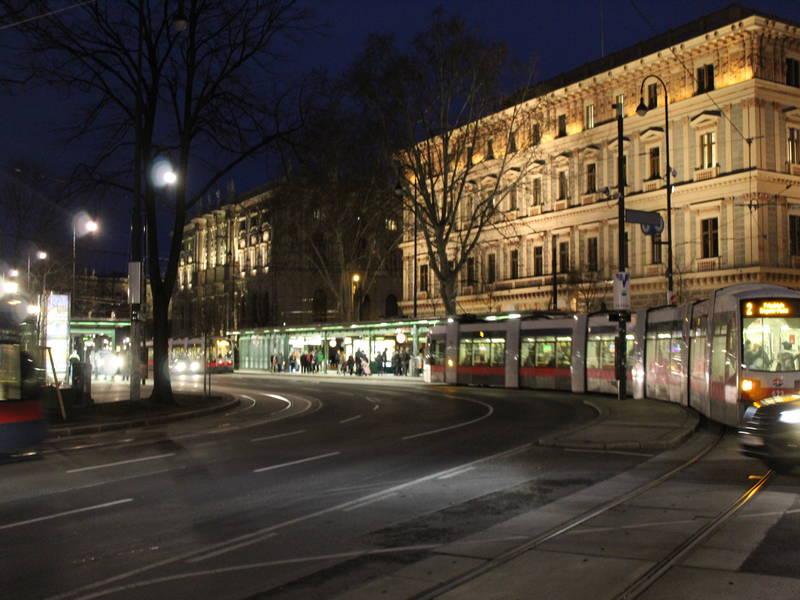
Schloss Schonbrunn
As proper aristocrats the Habsburgs required a "cottage", a summer residence and for this they built, between 1696 and 1712, the Schonbrunn Palace, modeled Versailles. This impressive royal residence and its beautiful gardens have been one of Austria's most famous cultural attractions since 1960. Its 1,440 luxurious apartments hosted Maria Theresa, Empress Sissy, Marie Antoinette, the Great Napoleon and the first performance, in the hall with the mirrors, of a 6-year-old pianist named Mozart! There are two tour packages, the Imperial Tour, in which you will be able to see 22 rooms of the palace and the ticket costs 14.20e, and the Grand Tour, where you will admire 40 rooms with 17.50e. In both cases, however, a free audio tour is available.
Behind the palace, at the end of the gardens, there is the Vienna baroque Zoo (Tiergarten Schonbrunn), which is the oldest in the world, since it has been operating since 1752! On the site of the palace, there was a private zoo, which belonged to the emperors of Austria since 1540, but was opened to the public in 1779 and was free. Interesting is the fact that the advent of the first giraffe in 1828 from Africa, influenced even the fashion of Austria. The garden is home to more than 500 species of animals, some very rare and endangered. A visit to the Vienna Zoo is a tour of the fascinating world of animals from every continent. Admission costs 14e.
MuseumsQuartier
At the southwestern end of the historic centre, behind the imposing walls of the Old Imperial stables, the MuseumsQuartier hides its treasures. It is a complex of museums and galleries, historical and modern buildings, unified in the same space with a total area of 60,000 sq.m.. The renovation of the former stables began in April 1998 and opened its gates in two stages (June and September 2001). The total cost of construction was 150 million euros! Some of the top museums there are Leopold, Kunsthalle and MUMOK, for a cultural walk from baroque to cyberspace.
Theoretically, the Austrian Museum of Fine Arts (Kunsthistorisches Museum) is not located in the MuseumsQuartier, but stands directly opposite Maria Theresia Square. Many call it the Louvre in Vienna, as it houses some of the most important exhibits in Europe. It is a former palace with an impressive octagonal dome, which has been operating in its current form as a Museum since 1891! Its exhibits come mainly from the collections of kings, emperors and the royal house of Hapsburg and so you will have the opportunity to admire works by Rubens, Rembrandt, Caravaggio, Vermeer and more. The entrance costs 16e.
Perhaps the most impressive Museum of the city is called Albertina. It is one of the largest and most important “print rooms” in the world, with about 65,000 drawings and about one million old prints, as well as more modern graphic works, photographs and architectural designs. In addition to the Graphic Collection, the museum has recently acquired on a permanent loan two important collections of Impressionist and 20th-century art, some of which will be permanent. Particularly impressive is the staircase of the building, created at regular intervals by various artists. Admission costs 16e.
Schloss Belvedere
Vienna's third palace is called Belvedere and is located at the south-east end of the city center. It is a baroque complex of palaces and gardens, built in the late 17th century by Prince Eugene of Savoy as a summer residence. This is an emblematic point in the history of the country, as among other things there was signed the treaty of independence of modern Austria, after the end of World War II. It consists of two palaces (the Upper Belvedere and the Lower Belvedere), the Orange Fortress, the Stables and the impressive Gardens that surround the historic buildings. Indoors you will admire various works of art, the most important of which is the famous "Kiss" by Klimt. The ticket for both palaces (Upper & Lower Belvedere) costs 22e, while you can also purchase individual tickets for either of the two buildings.

Karlskirche-Secession
The Church of St. Charles (Karlskirche) is located on the south side of Karlsplatz and is considered one of the most significant Baroque churches in the world, with a unique and very impressive dome (about seventy meters high). The history of the temple began in 1713, a year after the last major plague epidemic in the country, when Charles VI, Holy Roman Emperor, pledged to build a church for his namesake Patron Saint, Charles Borromeo, who was revered as a healer for plague sufferers. The church originally had direct eye contact with Hofburg and was, until 1918, the Imperial Parish Church. Its interior is as impressive as its exterior, since it is decorated with elaborate frescoes of notable artists, marble and gold leaf. The ticket costs 8e, with which you can climb to the top to admire the painted dome from close up, but also to gaze at the city from above.
Nearby is another important art space in Vienna, the Secession Building. It concerns Zetssionism, a movement founded in 1897, which reacted against the conservative established artistic class, which prevailed in the academic artistic circles of the time. So a group of Viennese artists broke away from the official Association of Austrian artists founding this movement. Externally is very impressive, since at the top there is a golden ball, while inside you will find various masterpieces, but they do not share a common sophisticated style. Admission costs 9.5e.
Hundertwasserhaus
The House of a Thousand Waters (Hundertwasserhaus) is perhaps the quirkiest building in all of Austria. It is an apartment complex built in 1983-1986 by the Austrian painter, sculptor and architect Friedensreich Hundertwasser. Unlike traditional designers, Hundertwasser avoids flat floors and straight corridors, introducing into his design what he calls "unevenness of beauty." The roofs are covered with ornate gardens with more than 250 trees, shrubs and plants. His influences clearly come from other subversive architects of the time, such as Antonio Gaudi and Gustav Klimt. The positive response of the public and the use of the Hundertwasser House as a tourist attraction encouraged other cities to design similar buildings, such as "The Green Castles of Magdeburg" (Die Grune Zitadelle von Magdeburg) in Magdeburg, Germany. Admission costs 12e.
Stadtpark-Burggarten
Parks and nature in general are particularly connected with the daily life and recreation of Austrians, as there they rest mentally and physically, seeking absolute peace and tranquility.
Perhaps the most beautiful park in Vienna is the Stadtpark, the city park. It is an area of 65,000 square meters (28 acres), resting on the Danube canal. In this park you will find a lake, scattered statues of famous Viennese artists, writers and composers, with the most impressive golden sculpture of Johann Strauss, while when the weather is good you will see Viennese flocking by tens to run, bike or picnic and generally enjoy the sun.
Another injection of greenery in the city centre is Burggarten (the castle garden). It is a park created after the disasters caused in Vienna after the withdrawal of Napoleon's troops in 1809. The hallmark of the park is a statue of Amadeus Mozart, with a key of Sol from flowers lying in front of it.
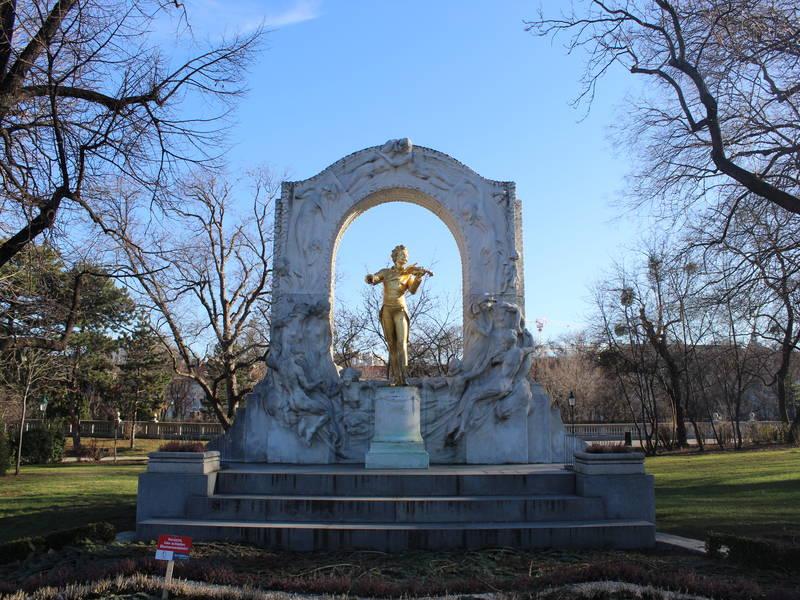
Naschmarkt
A visit to Vienna could not be complete without going through Naschmarkt. It is the largest (1.5 km long), the oldest (it is said to have been operating continuously since 1900) and the most popular open market in Austria, which plays a very important role in the economy and everyday life of the Austrian capital. There you will find everything from local delicacies, spices, cheeses, nuts to glassware, crystals, clothes and anything else you can imagine. At this point also, there are some of the best restaurants in the city for tasty and economical food.
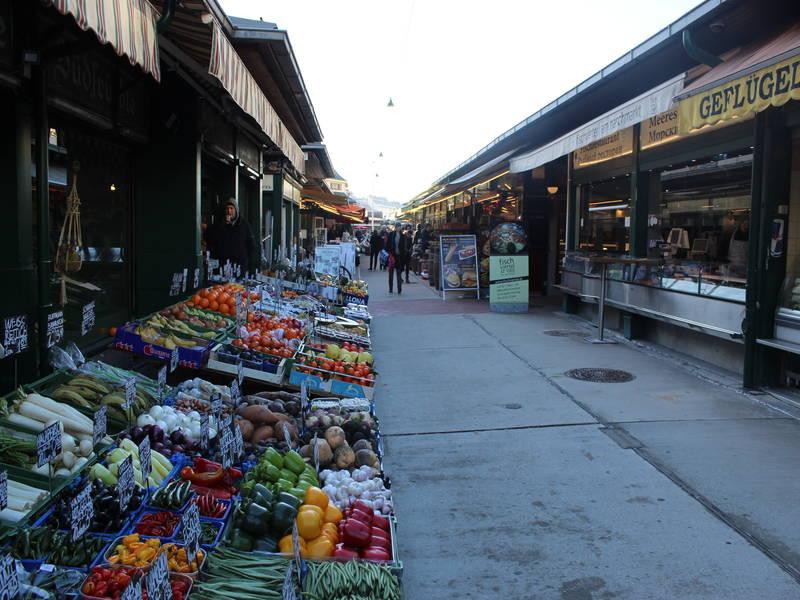
Prater
If you want to get away from guided tours, museums and art, Prater Park is a good choice. Located in the northeastern part of the city and inside, there is one of the most famous amusement parks in Europe, the Wurstelprater, identified with the park that it is often referred to as the Pratter. The park's trademark is the Reisenrad wheel, created in 1897 as a tribute to the 50 years of the Franciscan-Joseph monarchy. General admission to the park is free; however, admission to the games starts at 1 euro and goes up to 10.
How to go
Thessaloniki is connected by air with Vienna and Flughafen Wien Airport, via Wizz Air and Austrian Airlines. The most economical option is the first, since with proper planning one can find tickets starting from 43€ round trip, while in the second case 89€ round trip. Beyond that, if you want a more comfortable flight, you can choose an Aegean flight with a stopover to Athens, from 191 round trip. Finally, you can reach it by train or bus if you are in Bratislava, as the distance is about an hour, and tickets to the Slovak capital are usually cheaper.
Where to stay
Vienna, as a city in Central Europe, is relatively expensive in terms of accommodation. So I would suggest avoiding the historic center and area one, where everything is more expensive and overpriced, to move south or east of the center, since the transport network is good enough and you can move very easily and quickly where you want. My first suggestion is the Star Inn Hauptbahnhof, a 3-star hotel, fully equipped with fridge, smart TV and espresso machine, located next to the train station, very close to a metro station and offering good value for money. Also, an excellent and economical choice is the Hotel Odeon, which is just two stops from Stephanplatz and has clean rooms and very helpful staff. Finally, if you want to be in the city center without wasting a lot of money, the solution is a hostel and the best of them is Do Step Inn Central.
How to move
Vienna is a modern metropolis, particularly friendly to the resident and the visitor regarding transport. The main means of transport in Vienna is the metro, which has 6 frequent routes, covering every point of the city. The ticket costs 2,40e for a trip and so I would suggest depending on the days you will stay in the Austrian capital, to take out a multi-day ticket, in order to save a lot of money. There are also buses and trams in the city, serving short distances inside and outside the historic centre (the ticket is the same), while Vienna is particularly friendly to cyclists. So if the weather allows, renting a bike is an ideal choice for transportation in the town. Finally, there are many taxi companies in Vienna, and you will understand this from the many colors that cars have. The charges start from 2e and is considered relatively economical compared to other European cities. In closing, I would suggest that you purchase Vienna Card, which with 13,90e for 24 hours, 21,90e for 48 hours and 24,90e for 72 hours offers unlimited transportation on all public transport. You can get it from the official website, the airport, the metro stations and from the various points that serve tourists in the city.
What to eat
Vienna is famous for its cuisine; indeed Viennese cuisine is the only one in the world that has been named after the city and not the country as is customary. The national dish is, of course, Viennese schnitzel and the best you will taste at Figlmueller, which is the most well-known, in fact the schnitzel there is bigger than the dish! In Schnitzelwirt, which is the most economical and in my personal opinion the most delicious, and in Salzamt, which is mostly preferred by the locals.
Of course, since you are in the Austrian capital, you should try the famous vienois chocolate and its delicious sweets. In the city there are many cafe-confectioneries, which even exist in the same place for hundreds of years. The most famous is Cafe Central, a very atmospheric cafe in the city center, with a wide variety of sweets and beverages. Also, you should not miss the Demel, located on the pedestrian street opposite the Hofburg Palace and is the haunt of many famous Viennese. Also, the hotel's Cafe, Cafe Sacher to taste the famous Sacher Torte, while for a more relaxed coffee, you can go to Vollpension, in a quiet neighborhood of Vienna to feel more vivid Viennese culture.
Finally, I highly recommend going up to the 18th floor of the SO / Vienna Hotel and having a cocktail at Das Loft with panoramic views of the entire city. This particular bar is so impressively decorated with the wallpaper on the roof that it will leave you speechless.
Useful information

The currency of the country is the euro.
In Vienna the language used is German. But the majority, even older people, speak English, so ask for clarification in English.
Vienna is an hour behind Greece (GMT +2).
In Vienna we travel with a passport or a new type of Police ID, where the details are indicated in Latin characters.
The Greek Embassy in Vienna is located at 14 Argentinierstrasse and its phone is (00431) 50615.
Getting to and from Vienna airport is simple, since there are continuous train and bus services. The wisest option is the CityAirport Train, which in 20 minutes without stops, reaches the city center. The ticket costs 11e one way and 19e with return. Also, there is the slower S7 train (Schnellbahn), which makes twice the time, but costs clearly cheaper.
If you have time, do not miss a day trip to neighboring Bratislava. By taking a train or bus, you will be in the capital of Slovakia in just over an hour.
In winter, the cold in Austria is particularly "bitter", and the snow is a common image in Vienna, but it is beautiful at Christmas. The climate is warmer from April to early October, which is the ideal time to visit.
Recommended excursions → Salzburg, Graz, Bratislava
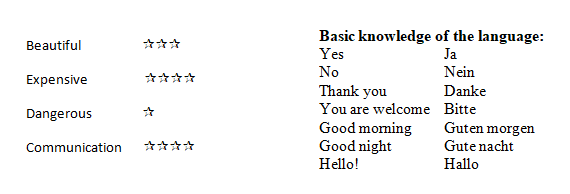
If this article seemed interesting or contributed to your quality information, then you can like my facebook page: o_thessalonikios or follow me on instagram!
Mouzakidis Pantelis








